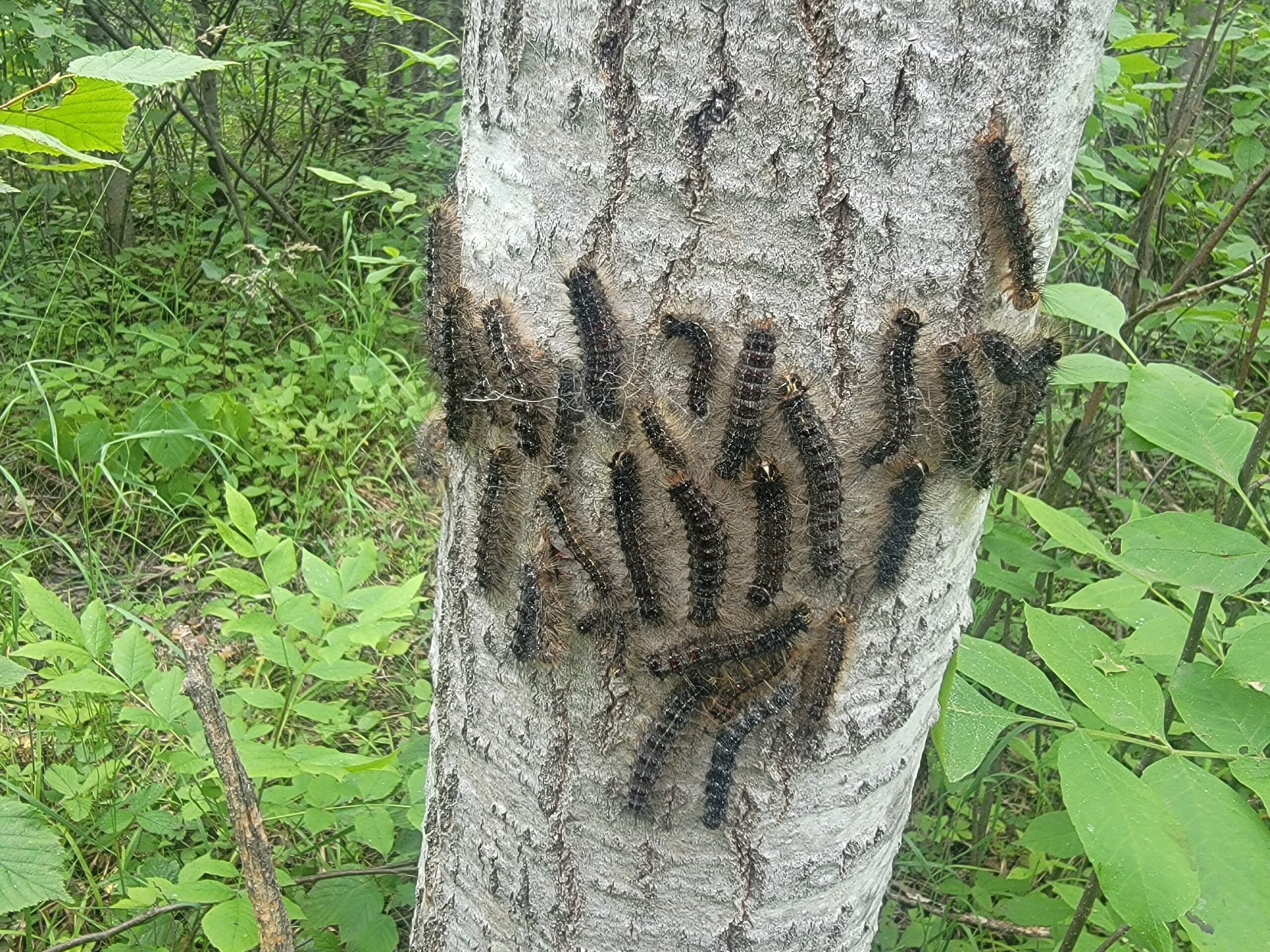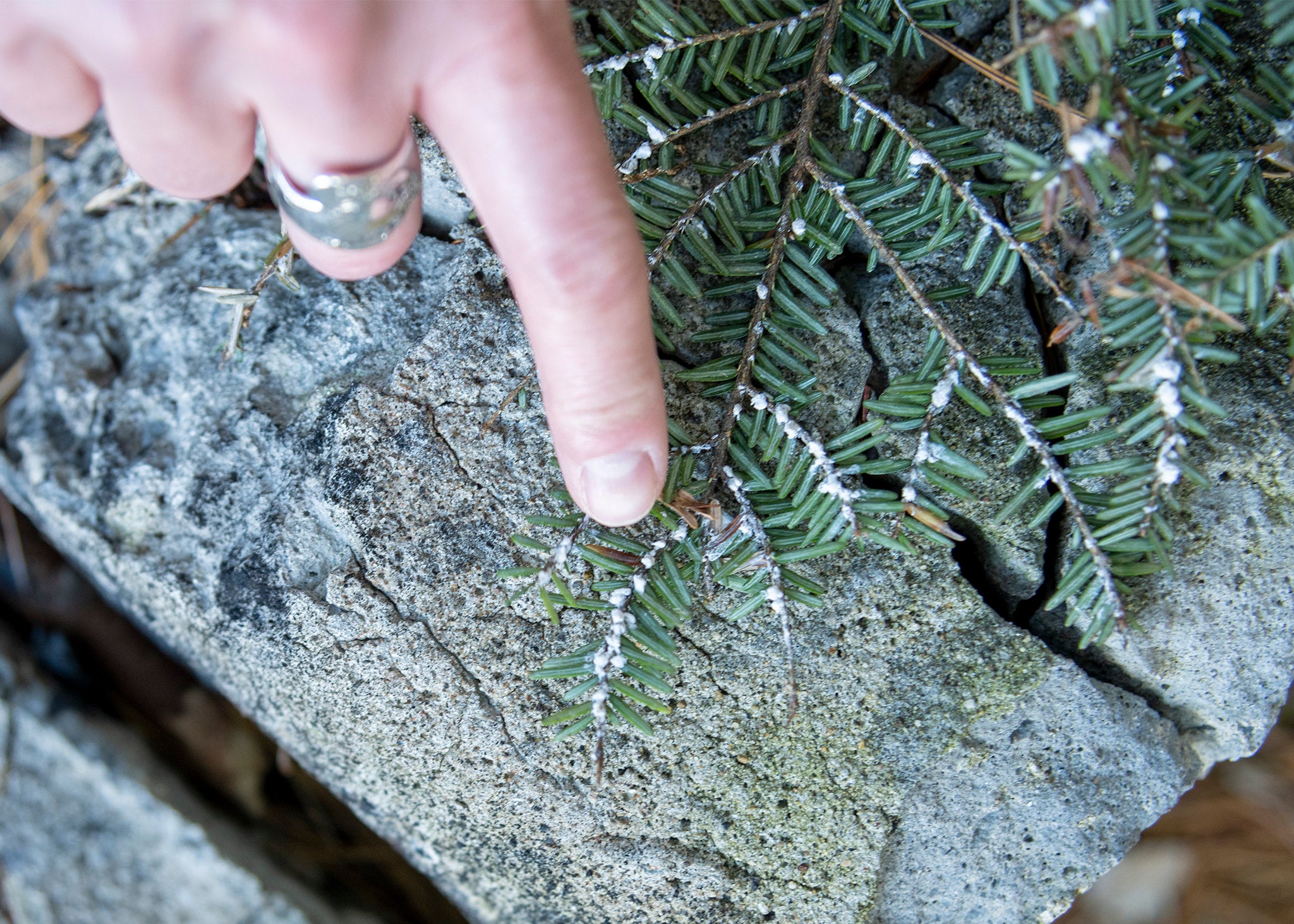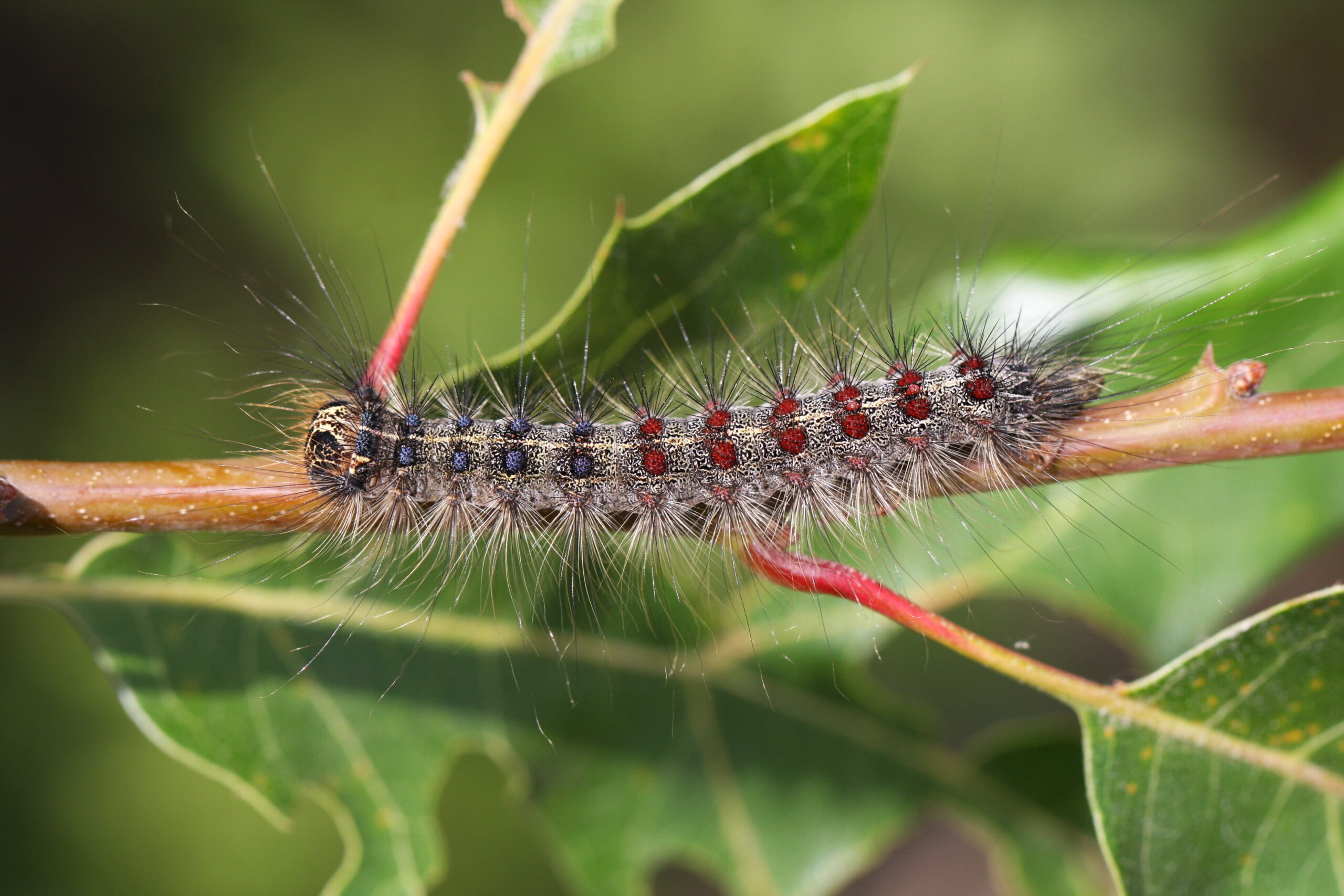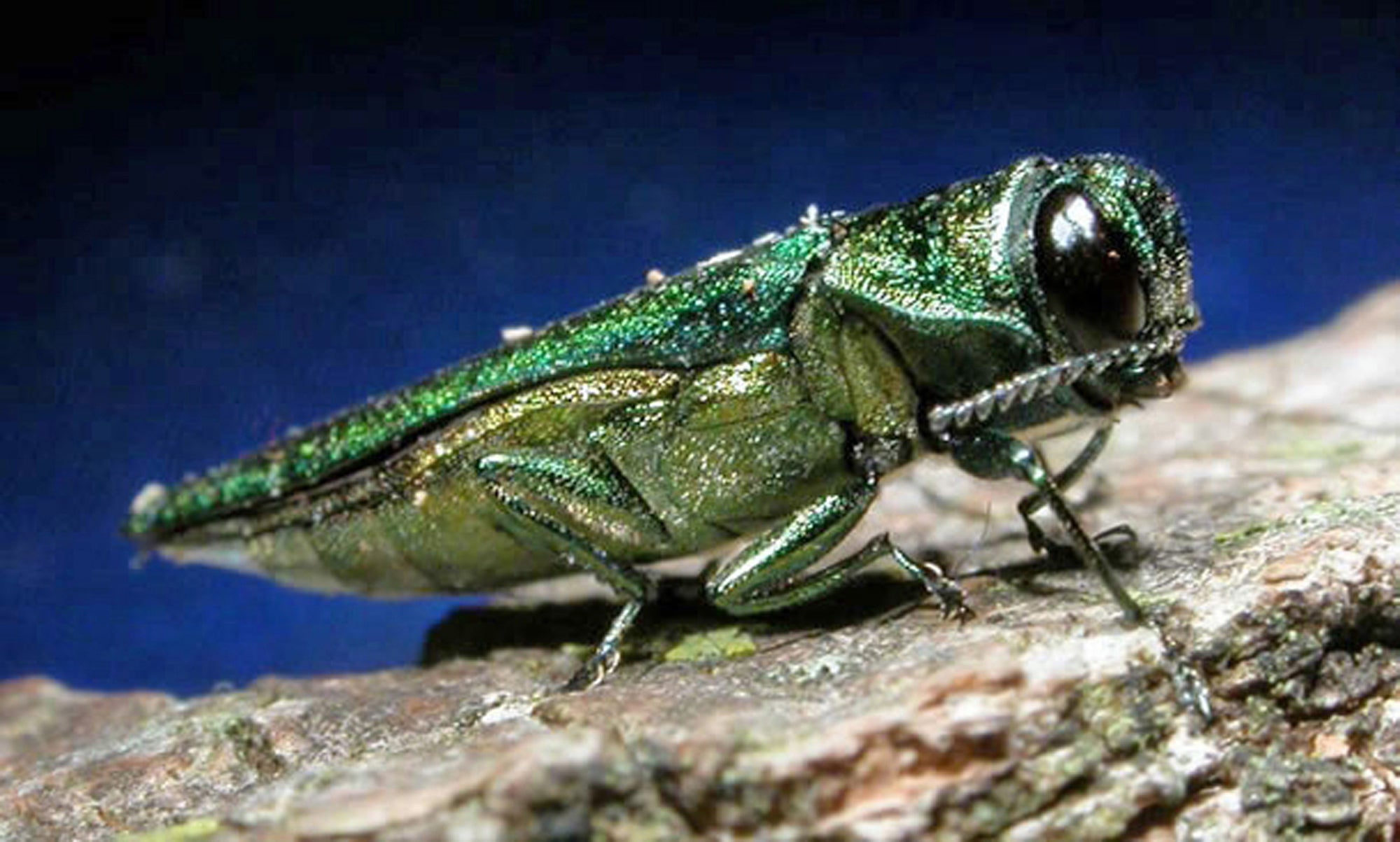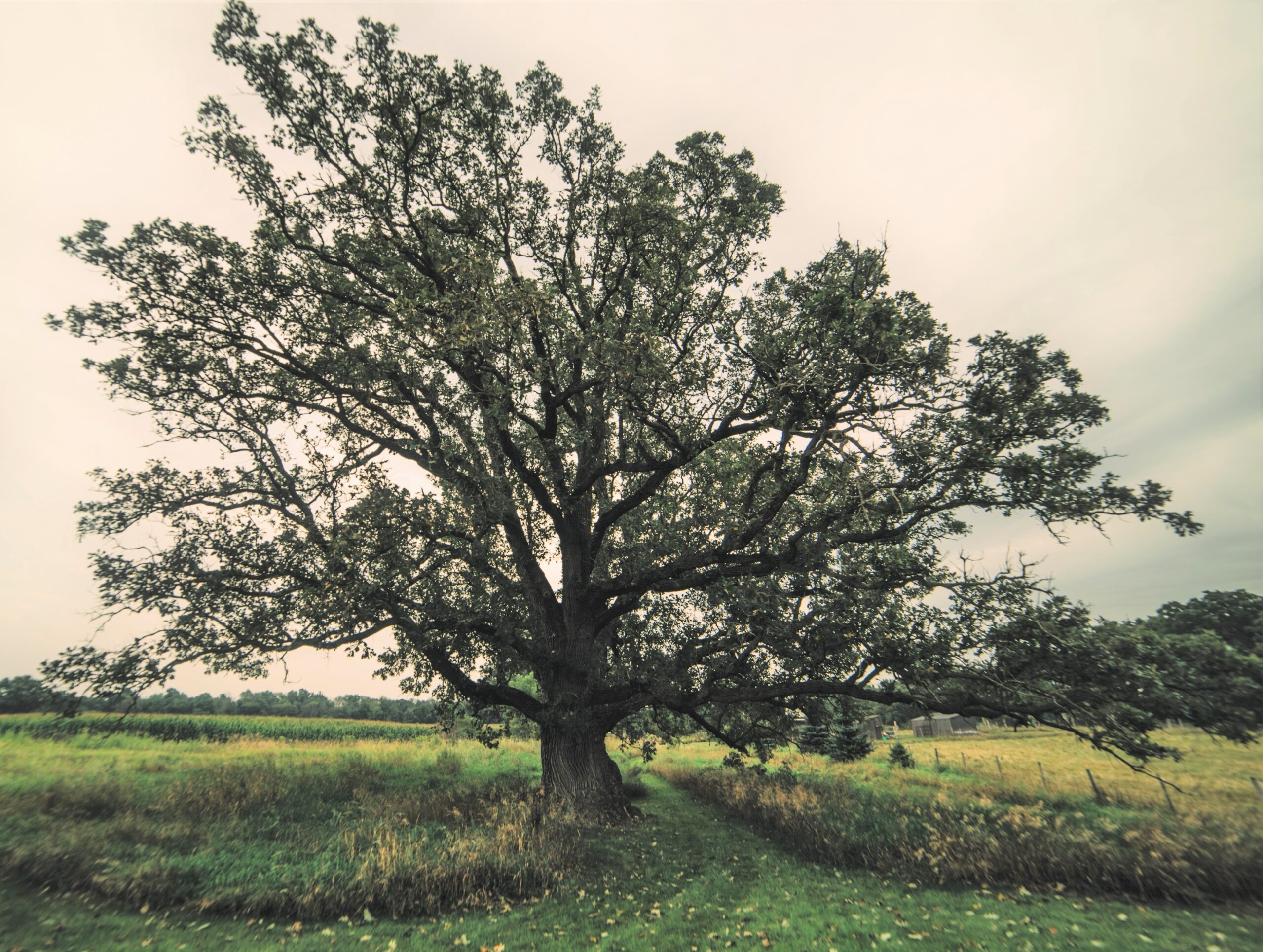Wisconsin saw its worst spongy moth outbreak in more than a decade in 2023. The state could see a repeat this year, unless spring rains help decrease their population.
Spongy moths, renamed in 2022, are invasive insects native to Europe, Asia and North Africa. They were first introduced in the late 1800s, and outbreaks occur every five to 10 years. Spongy moths are destructive during the caterpillar stage when the voracious eaters can completely strip leaves from entire forests.
Bill McNee is the state Department of Natural Resources’ forest health specialist for southeastern Wisconsin. He said Wisconsin saw record defoliation across 373,000 acres last year compared to the previous record of 347,000 acres set back in 2010. This year, spongy moths could be just as bad, he said, since caterpillar survival was higher than normal with the warm winter in addition to last year’s dry spring and summer.
“The outbreak in parts of Wisconsin is expected to continue similar to 2023,” McNee said. “We’re also getting a number of reports and seeing egg masses out in the forest, indicating that the defoliation and abundant caterpillars are likely to spread into new parts of the state.”
McNee said the insects’ spread is most likely to occur in northern Wisconsin, as well as some parts of southern counties. While some areas could see another bad summer, he said others may see an end to the outbreak. Wetter than normal weather this spring could also support the growth of a fungal disease that affects the caterpillars, causing their population to decline or collapse.
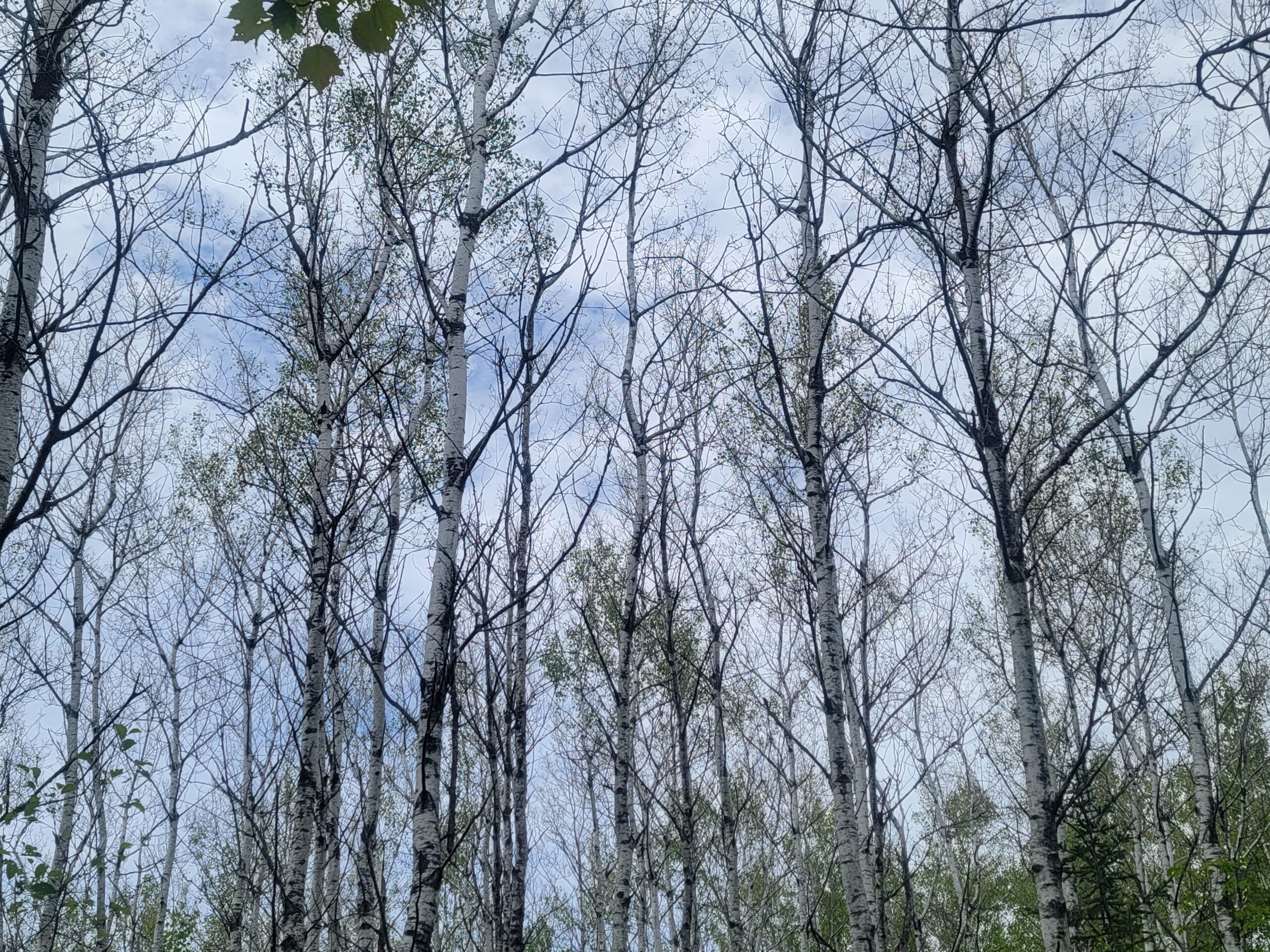
News with a little more humanity
WPR’s “Wisconsin Today” newsletter keeps you connected to the state you love without feeling overwhelmed. No paywall. No agenda. No corporate filter.
The caterpillars feed on up to 300 species of trees and shrubs during spring and early summer. They prefer trees that are common in mixed hardwood forests, including oak and aspen. A single spongy moth egg mass can contain up to 1,000 eggs.
Patrick Engelken, an entomologist with the U.S. Forest Service, said he’s expecting a larger spongy moth outbreak early this spring. He said that’s likely to affect most forested areas in northern Wisconsin where trees lost their leaves last year, including the Chequamegon-Nicolet National Forest. The outbreak was most problematic in the Bayfield peninsula with defoliation observed on about 145,000 acres in Bayfield County.
“If we have a wet spring, hopefully it can cause mortality and some relief for those forests in northern Wisconsin,” Engelken said.
Spongy moth populations tend to be very low during wet springs because they often get sick and die from a fungal disease known as Entomophaga maimaiga that thrives in damp, rainy conditions.
A wet spring could help keep spongy moths in check
The state could see some help from Mother Nature as the latest monthly drought outlook from NOAA’s Climate Prediction Center shows drought conditions easing. Prior to last Thursday, 75 percent of Wisconsin was abnormally dry, but now less than half the state is drier than normal.
Rich Tinker, the center’s drought expert and meteorologist, said the agency is expecting warmer than normal weather and above-normal rainfall for most of the state in May.
“We’re thinking that the areas of drought are going to improve in Wisconsin in the next month,” Tinker said. “Conditions after that are not quite as certain.”
If forests experience defoliation several years in a row, trees can begin to show signs of extreme stress.
PJ Liesch, an entomologist with the Division of Extension at the University of Wisconsin-Madison, said defoliation could slow the growth of trees that may be logged for lumber. From a forest health perspective, it could also leave them vulnerable to secondary pests like the two lined chestnut borer. The insect, a native relative of the invasive emerald ash borer, typically targets weaker oak trees and starts killing branches in the upper canopy.
With spongy moth increasing for several years now, Liesch said there’s a lot of stressed oak trees.
“So the secondary insects and problems can start popping up, and then it’s a very slippery slope leading to tree death in some situations,” Liesch said.
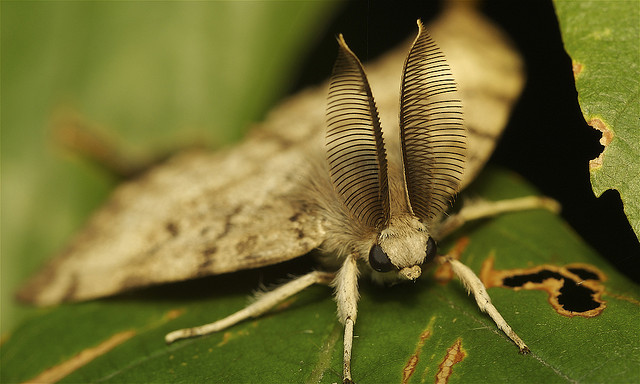
Treatment options vary for homeowners and agencies
For homeowners, Liesch said dead trees could significantly affect the appearance of people’s yards and potentially their property values. Both chemical and nonchemical options exist for homeowners to treat their trees. Liesch said that can include the use of sticky or burlap bands that are tied around trees to catch caterpillars, which can later be brushed into a container of soapy water. Other methods include spraying them with a horticultural oil.
For private landowners and campgrounds, the DNR’s McNee said he’s heard quotes that aerial spraying costs about $100 per acre. The state doesn’t offer cost-share programs for treating spongy moths on private property.
Even so, the DNR is conducting aerial spraying across six state-owned sites within Columbia, Marinette, Sauk and Walworth counties. The agency is treating more than 900 acres with a bacterial insecticide known as Foray between early May and June.
The Wisconsin Department of Agriculture, Trade and Consumer Protection will also conduct aerial spraying across nine counties in western Wisconsin from May to mid-July using a bacterial insecticide or pheromone-based products that disrupt mating for spongy moths. The agency notes its insecticide, “Bacillus thuringiensis var. kurstaki,” or Btk, is a naturally-occurring bacteria that’s not toxic to people, pets, bees or other animals.
Approximately two-thirds of Wisconsin, spanning 53 counties, is under quarantine regulations for spongy moth that require inspections of wood product and outdoor household items before moving them to unaffected areas.
Engelken urged people to check their vehicles or wheel wells for any signs of spongy moth egg masses or caterpillars to avoid moving them to uninfested areas.
Wisconsin Public Radio, © Copyright 2025, Board of Regents of the University of Wisconsin System and Wisconsin Educational Communications Board.

